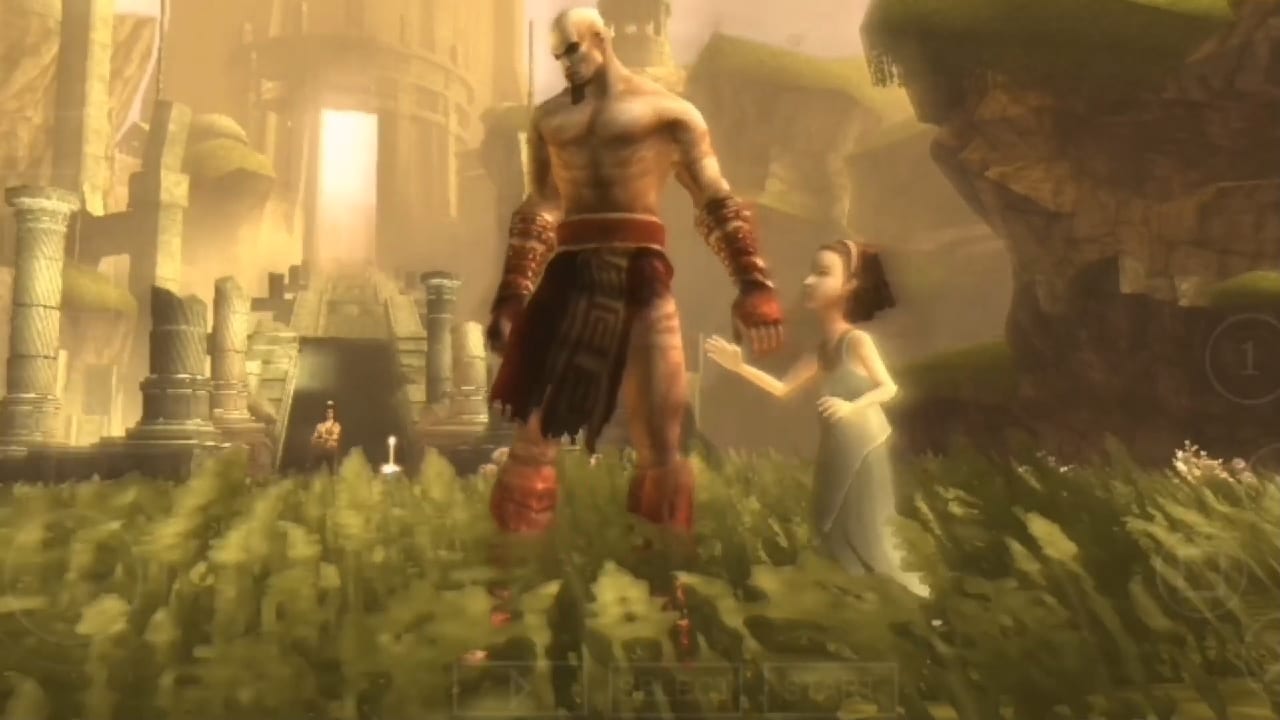Prior to attending E3 in 2004, and much like everyone else, no-one from developer Ready at Dawn had heard of God of War. The studio already had an ongoing relationship with Sony, however, and was there to showcase the portable wizardry it was doing with PSP spin-off Daxter. What members of the team saw would set Ready at Dawn's development trajectory for years to come, and all it took was a visit to the Sony Santa Monica booth.
“Whoever played it first on the team came back and told everyone ‘you’ve got to go play this!’ And we did,” says Ru Weerasuriya, Ready at Dawn’s CEO and creative director. “All of us ended up just playing the demo. After that was when it dawned on us, to do right by the PSP, doing Daxter 2 would’ve been amazing but we almost felt like ‘oh my god, can you imagine being the ones to bring this new amazing title to the console?’”
The seed was planted. God of War would not release until 2005, but would instantly become one of PlayStation’s most celebrated action franchises, and the PSP-focused Ready at Dawn wanted the challenge of channeling its dancing hack-and-slash fluidity onto the portable platform. So far, one might say, so expected. But the two games that would eventually emerge from this, Chains of Olympus and Ghost of Sparta, turned out to be much more than miniaturized versions of the originals. It wasn’t just the overwhelming brutality Ready at Dawn identified as key to the series, but this cipher at the center of all the violence: who exactly was the man behind Kratos the vengeful god?
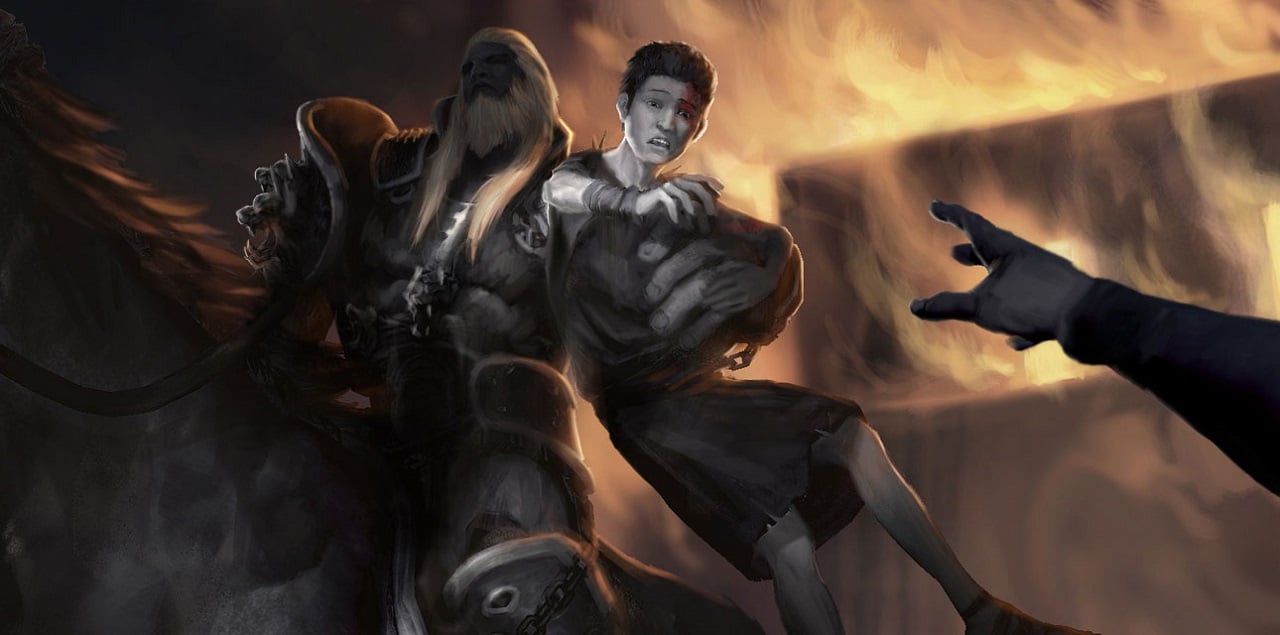
If you were to ask anyone before the release of this year’s God of War 'reboot' whether they cared about Kratos as a character, or even considered him as anything more than a bellowing mass murderer, the answer may well have been a laugh. The character had a backstory in the mainline games and a motivation, the death of his family, but it always felt like little more than an excuse to start ripping off harpy heads. The idea of a war-torn Spartan general wreaking havoc upon Greek gods, however, struck Weerasuriya and his team as having the potential to make God of War personal.
In 2005, when the first game had released, the serious conversations about bringing God of War to PSP started happening. “Corey [Barlog] was already starting on the idea of what God of War II could be,” Weerasuriya says. “I had gone up to see him in Santa Monica and he gave me the pitch of what the second game was going to be like. He was like ‘Okay let me tell you where the story’s going,’ so we could begin learning exactly what this IP is about.”
Ready at Dawn’s first major hurdle came when choosing where to set their ambitious project, and the original intention sounds strikingly familiar. “The very first conversations went into us exploring a different mythology. We were thinking; ‘well, maybe we don’t pollute the current timeline because so much is being done’ – we really didn’t want to make a mistake like that.” This approach also had major risks in Weerasuriya's opinion, however, not least that God of War was still a new IP for PlayStation, and there was clearly still so much room to tell stories around Kratos as audiences then knew him.
Weerasuriya explains how, at the time, Ready at Dawn itself was still finding its own identity and that its work on Chains of Olympus was representative of the team's own affinities. “We were learning what our culture was internally, learning who we were as developers outside of our previous lives, you know, like Blizzard and all that, and who I was personally as well as a storyteller,” he says. “I’ve always been partial to the human side of pretty much anything I watch, see, or work on.”
The creative director identified something in the first game's opening sequence, and this became the beating heart for God of War on PSP.
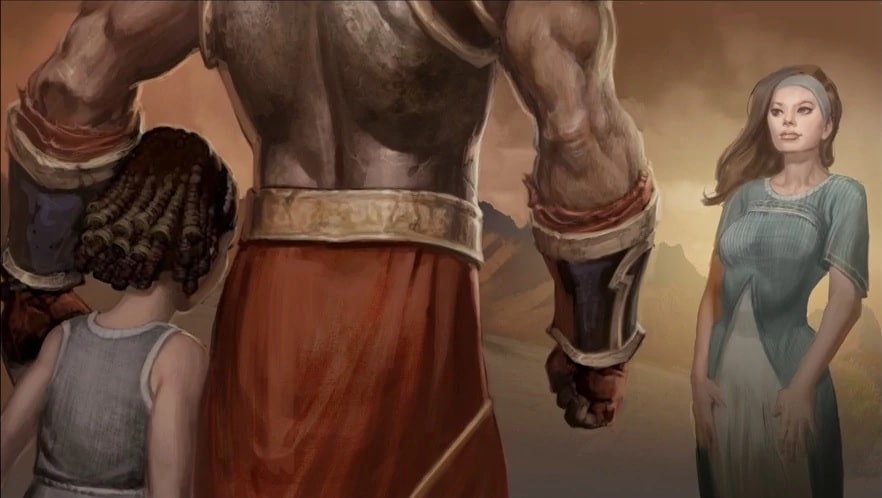
“I loved that very first shot which demonstrated how he got his white skin,” says Weerasuriya. "You have this kind of shadow puppet moment where you see the two silhouettes of the wife and daughter, and they just fall. And you realize what’s happened. For us it was like ‘okay, what about that story? What’s behind that? Who is she and who’s the daughter and what could we do out of it?’”
The answers involved setting Chains of Olympus during Kratos' initial ten years of service to the Olympian Gods, but before the first game’s main events. This in turn meant keeping the character grounded on a human level, not yet a god, but an extraordinary warrior searching for his supposedly deceased daughter Calliope. The game begins with Kratos successfully holding back the Persian army and preventing the siege of Attica, the explosive action players would expect, but Ready at Dawn was establishing stakes that would hit closer to home.
Chains of Olympus marks the introduction of a more sentimental tone and, in fleshing out this side of Kratos, began to humanize his tragedy. At a key moment, Kratos reunites in the underworld with the daughter he unintentionally killed, only to find himself having to forsake her yet again in order to save Olympus and prevent Persephone and Atlas from breaking free.
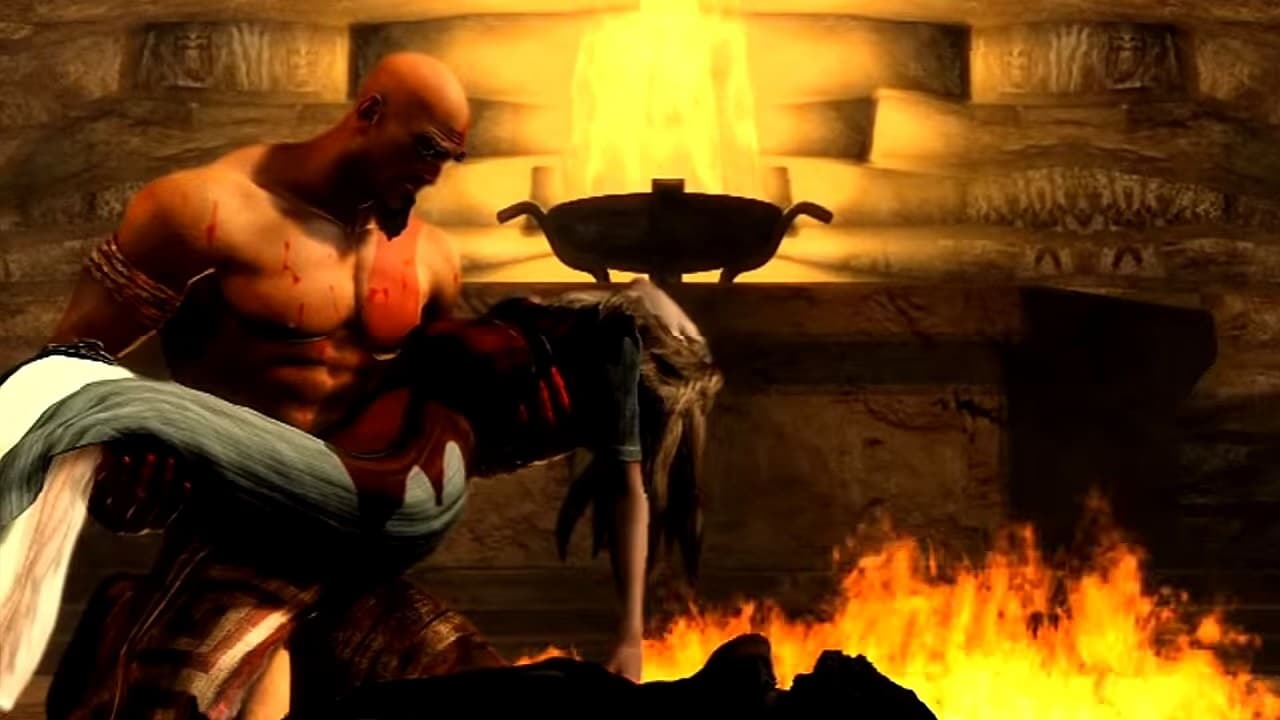
“It was definitely tricky to introduce someone like Calliope into the game,” Weerasuriya recalls. “You know the flute that he had carved for her, all those little details that went in. We were tackling different emotional cores than God of War would normally do, and I don’t think it was necessarily the comfortable thing to do either.” For its part, Sony Santa Monica showed confidence in the direction Ready at Dawn was taking the franchise. “They let us actually go far enough with it that, when we found it was actually working, it still didn’t change the soul of God of War. We had a good formula on our hands in exploring the human side of this character, more than just the greatest anti-hero of Greek mythology.”

Ready at Dawn’s efforts weren’t in vain. Upon release many critics and fans were left flabbergasted that such a fully-featured God of War had been realized on PSP. Chains of Olympus certainly delivered all the blockbuster thrills and badass moments people had come to expect, neatly contained within a narrative whose intimate scope felt appropriate for a handheld. The technical accomplishment of the studio, in fact, was almost too impressive, with most contemporary praise focusing on the game's looks and fluid combat (at one point Weerasuriya likens Kratos’ move set to a "brutal ballerina") but overlooking the narrative approach. Time for a sequel!
Launched mere months after God of War’s PS3 debut – the conclusion to Kratos’ journey to annihilate the Greek gods – Ghost of Sparta doubled-down on softening Kratos' hard skin. Now set between the original PS2 releases, by this point Ready at Dawn had proved its ability and earned the right to tell an even more foundational story.
Ghost of Sparta revealed the existence of Kratos’ long-lost brother Deimos, kidnapped as a child by the gods, as well as his mother Callisto. Both relationships prove crucial to how the Spartan warrior comes to terms with what matters most to him. “Introducing those characters and actually exploring the human side of Kratos allowed us to create a foundation which gives more credence to the anger he has,” says Weerasuriya. “It’s the frailty of them that suggests this whole idea that betrayal brings you back to the fragility of who Kratos is. The beauty of God of War’s PSP games, for me, is that it brought him back to something far more individual. That sometimes the struggle doesn’t have to be about saving the world. That the internal struggle is way stronger.”
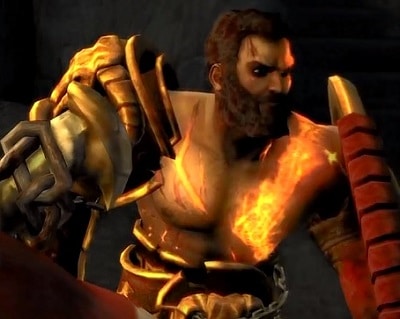
The introduction of Deimos, a forgotten brother to the demigod who conveniently has the same markings, might seem contrived to some (or rather too reminiscent of Devil May Cry's Dante and Vergil) but it’s all in service to an emotional arc that's new to the series. Weerasuriya is quick to emphasize how tightly these characters tie into where Kratos has come from. “That was really fun, and you know, made all the better because we got to work with Corey on that game,” he says. “It was fun to make these iconic things about the character part of these games, which helps make them feel all the more important. When you think about Kratos what are the three most core things? The blades, the ashes, and the tattoo. Telling the story behind the tattoo, it helped to add validity to that second PSP game.”
The recent God of War is, if anything, even more overt in its willingness to place themes like fatherhood and family at the forefront, and in this shows a series growing older with its audience. It seems Sony Santa Monica noticed what Ready at Dawn was able to bring to a series often thought of as little more than a spectacular hack-and-slasher. It feels like the PSP games created an emotional foundation that, in some ways, made the newest game more plausible.
Over a decade later Weerasuriya remains proud of the team’s work with Chains of Olympus and Ghost of Sparta. “You know seeing God of War today, I love the feeling that you were always playing a god in the core three games, but what was great about the games we made was that you played a human more than anything,” he says. “The conflicts were more human. It was very much about fighting another human rather than gods all the time. And I think we kind of reveled in it for quite a while, understanding that there was as much enjoyment into building Kratos in a human conflict as well as the god-to-god ones. It’s nice to see that now carried on where you see a side that’s almost him coming out of retirement.”
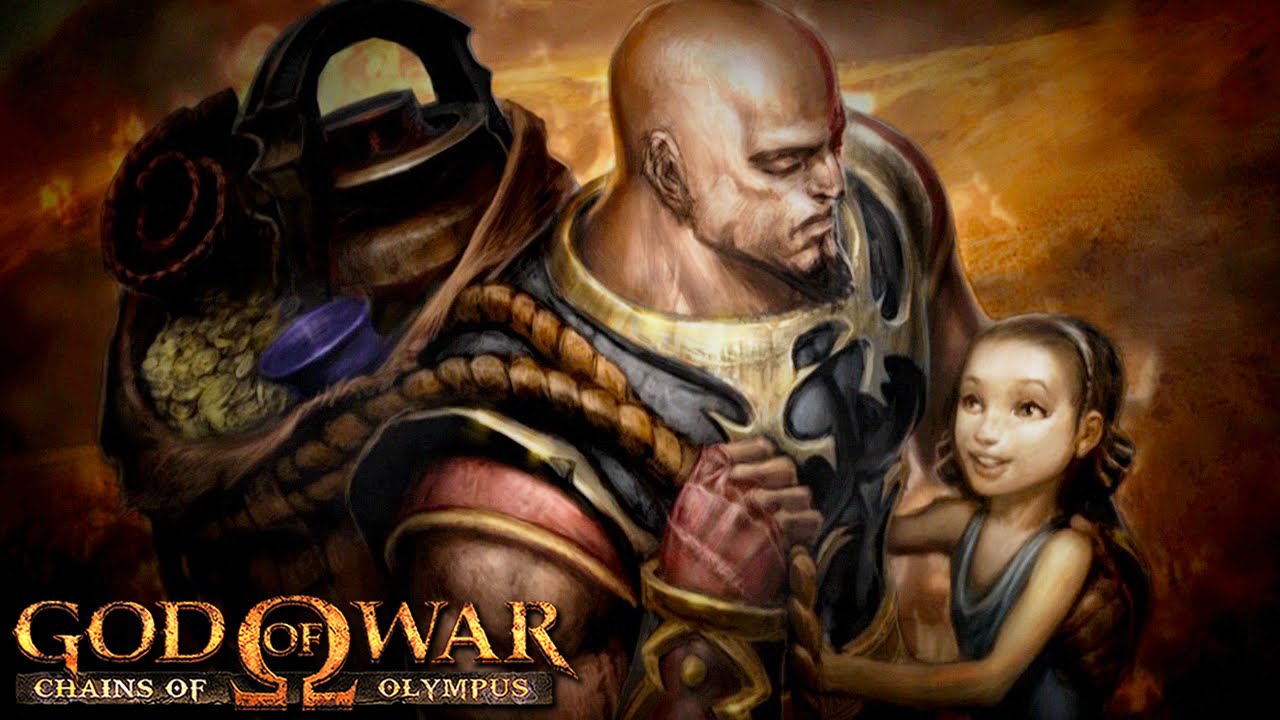
While on the subject, I ask Ru whether or not he’s had a chance to play Sony Santa Monica’s latest. “I think it’s absolutely brilliant. I’ve had the chance to play it, I haven’t had the chance to finish it because of the multitude of other things I should be doing. But that’s one of those games where I knew from the day it came on, it sat on my PS4 from the day it launched and every day I was reminded that I needed to start.”
“The brilliance of that game is not only the story that was told and experiencing the end of it, but how it was told,” adds Weerasuriya. “How that relationship is built between Atreus and Kratos. The feat that that team did to take one of the most iconic things about God of War, the blades of chaos, and reinvent the combat in a way felt so satisfying. It’s great.”
In recent times, Ready at Dawn has found much success with their own IPs, and continues to work with PlayStation on exclusives like The Order: 1886 and push VR boundaries with Lone Echo. Things are looking good but, nevertheless, I ask if the studio would like to work with God of War again. Weerasuriya says they’d love to, though it’s unlikely. “Of course. There’s so much of that IP that’s core to our DNA one way or the other that, going back thinking of those, it always makes us happy. I think that if the opportunity was to come, we of course would embrace it… though we would only do it if we felt we could bring something novel.”
Ready at Dawn certainly has a track record of doing that. It's worth bearing in mind, as we look forward to the inevitable follow-up to the most recent game, that Atreus is not Kratos's only child, and Faye was not his only family. And perhaps what we see in how Kratos behaves with the boy is, in some subconscious way, a reflection of these portable Greek tragedies – and an old man's determination not to re-live them.
 It's All Fucked Shirt $22.14 |
 Ape Out Shirt $21.68 |
 It's All Fucked Shirt $22.14 |
